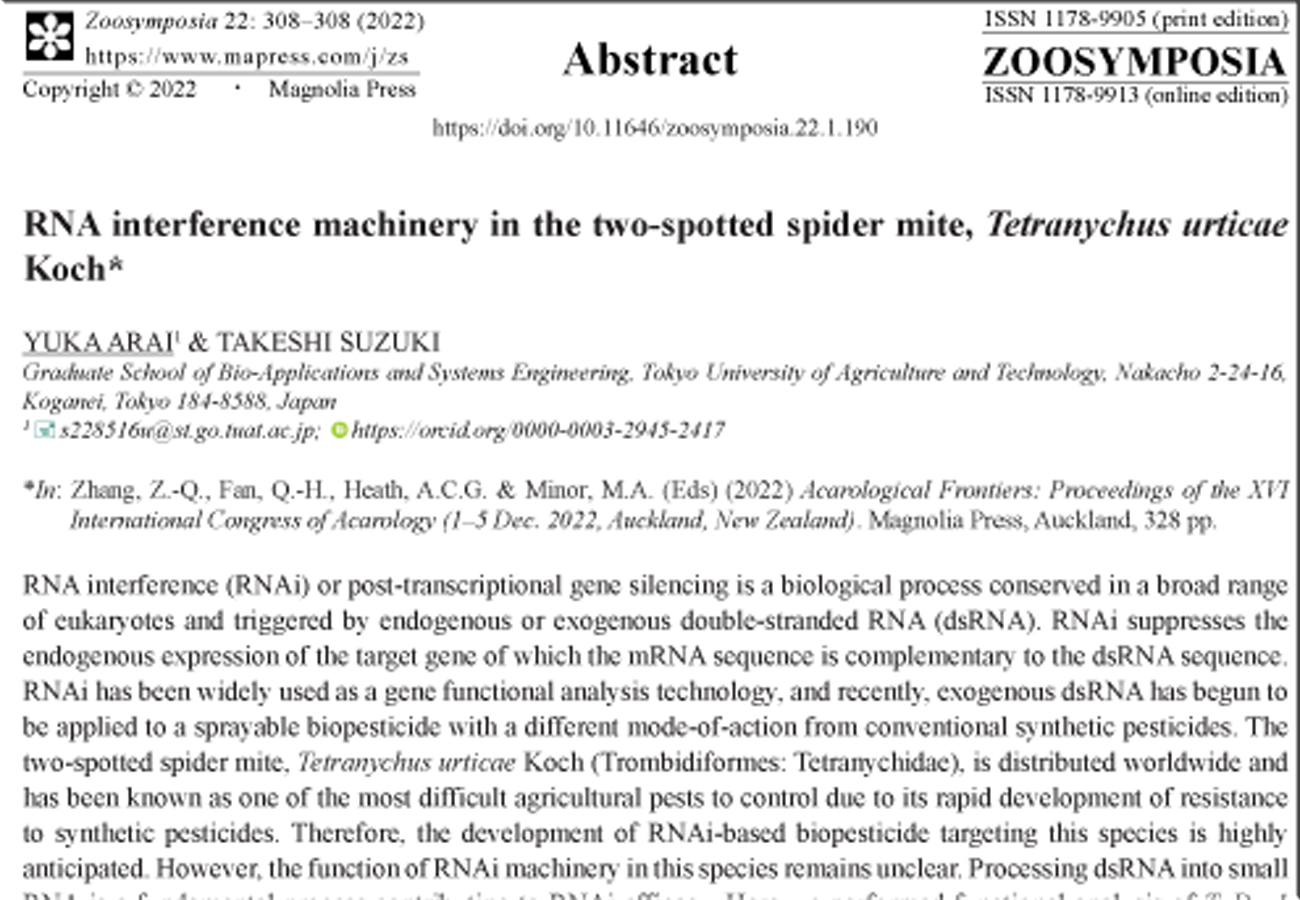Abstract
RNA interference (RNAi) or post-transcriptional gene silencing is a biological process conserved in a broad range of eukaryotes and triggered by endogenous or exogenous double-stranded RNA (dsRNA). RNAi suppresses the endogenous expression of the target gene of which the mRNA sequence is complementary to the dsRNA sequence. RNAi has been widely used as a gene functional analysis technology, and recently, exogenous dsRNA has begun to be applied to a sprayable biopesticide with a different mode-of-action from conventional synthetic pesticides. The two-spotted spider mite, Tetranychus urticae Koch (Trombidiformes: Tetranychidae), is distributed worldwide and has been known as one of the most difficult agricultural pests to control due to its rapid development of resistance to synthetic pesticides. Therefore, the development of RNAi-based biopesticide targeting this species is highly anticipated. However, the function of RNAi machinery in this species remains unclear. Processing dsRNA into small RNA is a fundamental process contributing to RNAi efficacy. Here we performed functional analysis of TuDcr1 and TuDcr2 genes, homologues of Drosophila melanogaster Dicer-1 and Dicer-2, which belong to the RNase III family. The nucleotide sequences of TuDcr1 (tetur19g00520), TuDcr2 (tetur07g00990), and an intergenic region as a negative control (NC) were obtained from the ORCAE database and used for PCR amplification of each DNA fragment. RNA synthesized by in vitro transcription from each DNA fragment was used to prepare dsRNA specific to TuDcr1, TuDcr2, and NC (dsRNA-TuDcr1, dsRNA-TuDcr2, and dsRNA-NC, respectively). A nylon-mesh-based feeding device was used to orally deliver dsRNA to age-synchronized adult female mites for 24 h. Both TuDcr1 and TuDcr2 were upregulated after oral administration of dsRNA-NC, which indicates the activation of RNAi machinery by orally-delivered dsRNA. Downregulations of TuDcr1 and TuDcr2 were observed in mites fed on dsRNA-TuDcr1 and dsRNA-TuDcr2 when compared to dsRNA-NC. However, no significant effects were observed in the susceptibility to RNAi targeting an essential gene Vacuolar-type H+-ATPase after oral administration of dsRNA-TuDcr1, dsRNA-TuDcr2, or dsRNA-NC. The dsRNA-cleaving assay revealed that the dicing activity was reduced in mites fed on dsRNA-TuDcr1 and dsRNA-TuDcr2 when compared with dsRNA-NC and that the activity seemed to be higher in TuDcr2 than TuDcr1. Our results suggest that TuDcr1 and TuDcr2 possess the activity of dsRNA cleavage and that TuDcr2 is responsible for dicing exogenous dsRNA.
References
-


